On Monday, a group of local catering students swapped the classroom for the coastline on a coastal foraging course with fervent forager, Craig Evans.
Eight Level 1, 2 and 3 Catering and Hospitality students from Coleg Ceredigion joined Craig and his lovable golden retriever, Llew, for an edible treasure hunt on Pembrokeshire’s shores.
The students were joined by their course lecturers and leaders, Sam Everton, 2025 National Chef of Wales and 2024 Young Chef of Wales, and Huw Morgan, a former chef at the Urdd in Llangrannog among other restaurants, alongside lead technician, Lona Winney.
Few know the coastline of south-west Wales better than Craig Evans. A lifelong forager, Craig first explored these shores as a young boy, gathering cockles with his father.
Now, he makes a living by sharing the knowledge passed down to him, guiding budding foragers along 150 miles of bountiful beaches in Pembrokeshire and Carmarthenshire. Courses run from Pembrey in Carmarthenshire to St. David’s in north Pembrokeshire – although most take place within a 10–20 minute drive of Tenby or Saundersfoot.
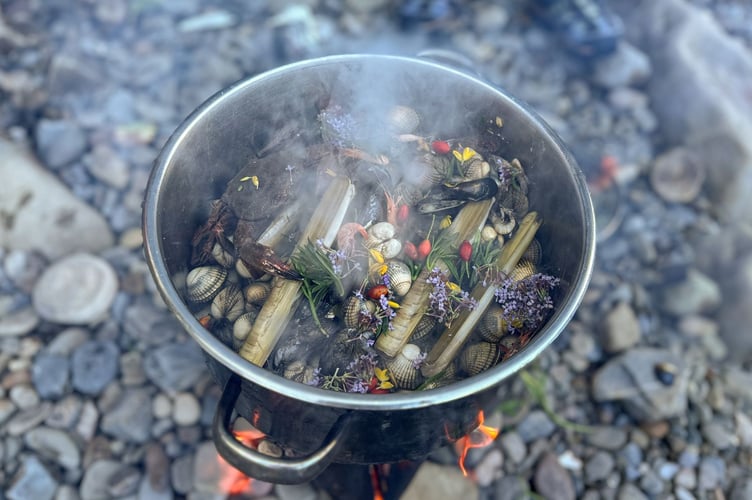
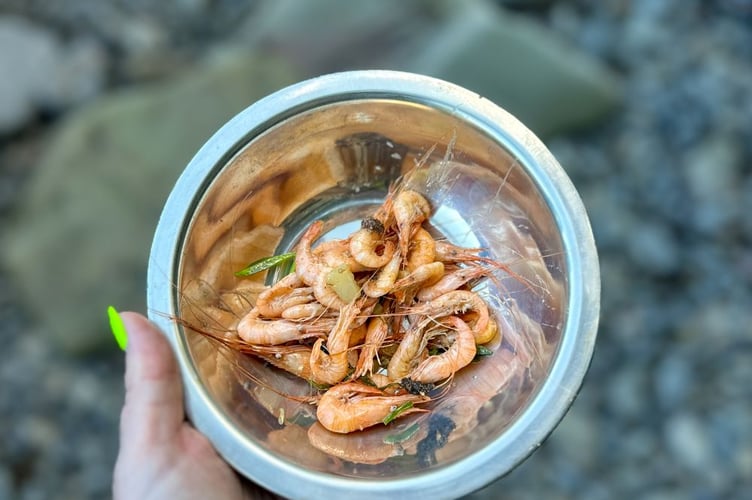
Craig’s passion and expertise have earned him recognition far beyond Wales, cementing his reputation as one of the UK’s leading coastal foragers. You may recognise him from BBC One’s Wynne & Joanna: All at Sea with Joanna Page and Wynne Evans (2024), Channel 4’s Best of Britain by the Sea with Grace Dent and Ainsley Harriott (2022), and BBC Two’s Great Coastal Journeys with Michael Portillo (2022) and Mary Berry’s Love to Cook (2021).
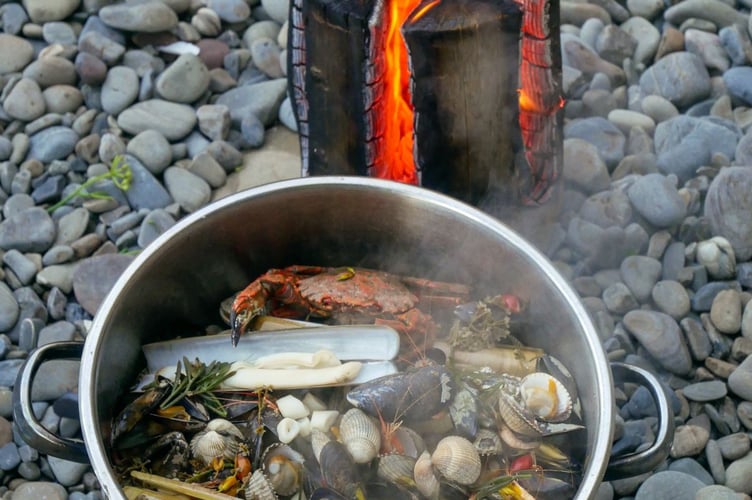
He’s also starred in cookery demonstrations at the BBC Good Food Show alongside iconic chef, Gennaro Contaldo, one of the godfathers of Italian food, and long-standing Food Editor, Barney Desmazery.
Pembrokeshire in particular stands out as a coastal forager’s dream. Its pristine waters - among the cleanest in the UK - are teeming with marine life and edible treats. But it’s not just the waters that make this coastline special. The dramatic tides of the Bristol Channel, the second highest in the world, uncover vast stretches of shoreline, transforming Pembrokeshire into one of the richest landscapes for coastal foraging.
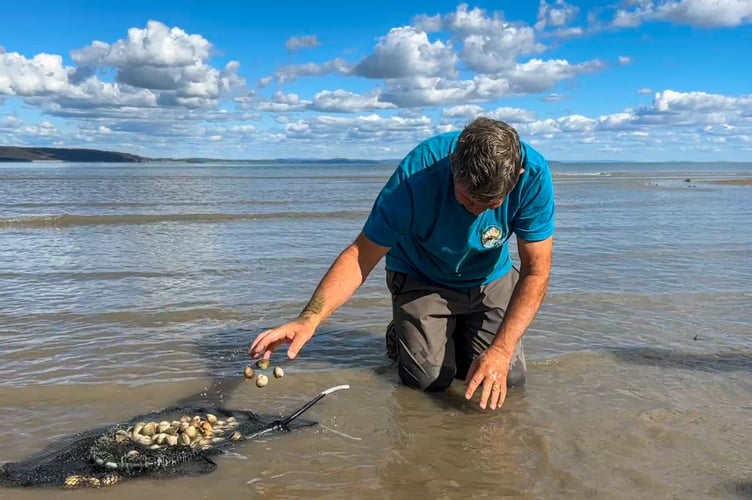
Understanding the tides is essential for anyone venturing onto the foreshore. Craig began the day with an introduction to how the gravitational pull of the moon shapes the ebb and flow of the sea, and why tide tables are a forager’s most important tool. Knowing when the water will retreat - and when it will rush back in - can mean the difference between a fruitful forage and a dangerous situation. Weather plays its part too, with air pressure and wind strength affecting how waves behave and, ultimately, what shellfish can be found.
Blessed with glorious September sunshine, we timed our trip to coincide with low tide just after 1.30pm. With a tide height of 0.9m (compared to the standard 0m), Craig explained that these were good conditions for searching out shellfish like cockles and razor clams. Our spot for the afternoon was a sandy beach near Tenby, where the receding waterline revealed rock pools and sandbanks ripe for exploration.
As we picked our way along the shoreline, Craig encouraged us to slow down and look closely. Soon we were spotting velvet swimming crabs - instantly recognisable by their soft, velvety shell and surprisingly feisty nature - as well as sea potatoes, a type of heart urchin, and curious colonial sea squirts clinging to the rocks. Barnacles dotted the stones, sand eels darted through shallow pools, and nestled in the sand we uncovered cockles, razor clams, mussels, and soft shell clams. Alongside shellfish, Craig pointed out edible seaweeds including laver, pepper dulse, nicknamed “sea truffle” for its rich, umami flavour, and rock samphire growing from the cliffs.
Each discovery came with a reminder about sustainability: only take what’s abundant, never strip a patch bare, and respect breeding seasons. Craig’s approach was clear - foraging should enhance your connection to nature, not deplete it.
The day was as much about science as it was about food. Craig explained how water quality plays a critical role in food safety, affecting how shellfish must be treated and cooked before they can be eaten or sold. Heat destroys pathogens, he told us, making thorough cooking essential when water quality is uncertain. In contrast, we were invited to taste a sliver of raw razor clam foot - safe to eat, he explained, because it’s muscle tissue rather than part of the digestive system, linking neatly back to the students’ food hygiene training.
As the sun dipped lower, Craig transformed our haul into a feast, lighting what he affectionately calls a ‘Solva stove’ – a Swedish candle made by cutting channels into a single upright log to allow airflow, creating a natural stove for cooking our foraged finds. First, he fried prawns in golden Carmarthenshire-made Shirgar butter with diced wild garlic bulbs and rock samphire; the aroma drifting across the sand. Then came cockles, razor clams, mussels, velvet swimming crab, and seaweed, steamed simply with a splash of water to let the natural flavours shine. We huddled together around the fire as the tide rolled back in, sharing the meal and the stories that came with it.
Coleg Ceredigion’s Catering and Hospitality diploma extends far beyond food preparation and presentation, equipping students with the real-world expertise needed to thrive in every aspect of hospitality: from advanced culinary techniques and front-of-house service to menu planning and mixology.
The department’s on-site training restaurant, Bwyty Maes y Parc, currently holds the title of Cookery School of the Year - an accolade it hopes to defend when the 2025 Food Awards Wales winners are announced in Cardiff this October.
Craig’s coastal foraging sessions build on this foundation by immersing students in an unfamiliar environment where they can learn about local produce, food safety, and sustainable sourcing - all while stepping outside their comfort zones. The experience not only complements their course curriculum but also builds confidence and inspires pride in Welsh produce.
Reflecting on the day, Chef Lecturer and Course Lead (Level 2) Sam Everton said: “I think today has helped the students learn and experience what’s available on the coastline of Wales. It just dives deeper into the knowledge needed to go out foraging on their own or with friends or family, highlighting Welsh produce they can use if they want to be able to cook something from their country or tell a story behind a dish. Today has really enhanced that experience and will help them move forward in their careers.”
Student Glyn Jones echoed the sentiment: “I went coastal foraging last year with college but until then, I’d never done it before. There’s something new to learn every time, it’s fun, and it’s a good day-out.”
Enjoy a six-hour introduction to coastal life in the intertidal zone on the Classic course (£90 p.p.), or delve deeper into life beneath the waters of south-west Wales on Craig’s seven-hour Extreme Low Tide course (£130 p.p.). Children go free with paying adults. Group and special interest courses are also available, including corporate bookings. Book at www.coastalforaging.co.uk.
Kacie Morgan is a Culinary Travel Writer and Author of The Rare Welsh Bit

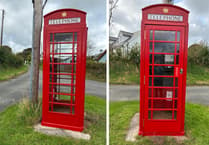
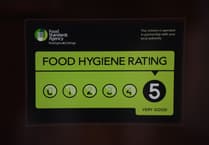


Comments
This article has no comments yet. Be the first to leave a comment.